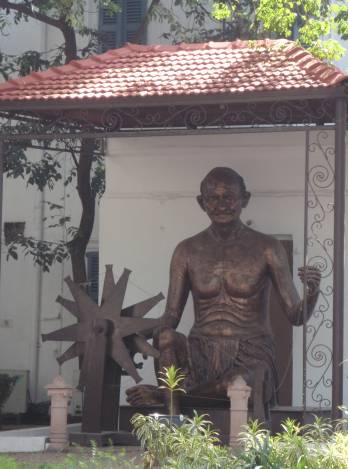INDEPENDENT INDIA

Ghandi Memorial in Delhi
The price of independence overshadowed much of the joy of independence for India. The partitioning of the sub-continent caused mass migrations of millions of Hindus and Muslims, and riots erupted. It is estimated that 10 million deaths were caused by the partition and its ensuing violence. India and Pakistan went to war in 1947 over Kashmir, and that contention continues today. However, shock-turned-to-peace followed the assassination of Mahatma Gandhi in 1948 by a Hindu fanatic whom believed Gandhi favored Muslims over Hindus.
Meanwhile, one of Gandhi’s close associates, Pandit Jawaharlal Nehru, became India’s first prime minister. His policies included a democratic state with secular polity, a strong industrial base, and a planned economy with non-alignment as the keystone of its foreign policy. Nehru ruled until his death in 1964.
Nehru’s daughter, Indira Gandhi, became prime minister in 1966, and she continued his pro-poor socialist policies. In 1971, she aided East Pakistan in its struggle against West Pakistan leading to the formation of Bangladesh. In 1977 she was defeated in her bid for reelection, but she was reelected in 1980. In 1984, she authorized military action against Sikh terrorists in the north, and she was assassinated by her own Sikh guards.
Her son, Rajiv Gandhi, took power, and he began liberalizing the economy and encouraging foreign investment. He, too, was assassinated in 1992 by a Sri Lankan Tamil separatist.
A series of coalition governments have been in power since 1996. Today’s government is led by the highly-respected Prime Minister Manmohan Singh, and it appears stable.
Return to our land travel page or our home page.

Cow dung mixed with straw and made in to patties patties dry in sun on walls a resourceful and common source of fuel in rural areas